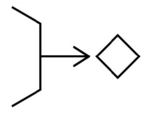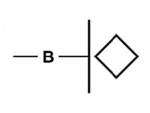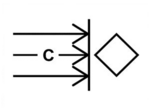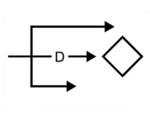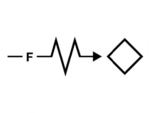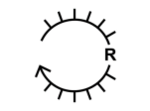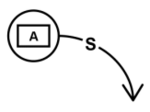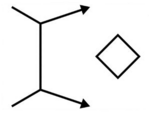Symboliken und Taskverbs: Unterschied zwischen den Versionen
Zur Navigation springen
Zur Suche springen
Zero (Diskussion | Beiträge) |
|||
| (14 dazwischenliegende Versionen von 2 Benutzern werden nicht angezeigt) | |||
| Zeile 1: | Zeile 1: | ||
=== Kartensymbole === | === Kartensymbole === | ||
{| class="wikitable" | {| class="wikitable" | ||
| Zeile 12: | Zeile 10: | ||
|Ein vorbereiteter Punkt an dem die Fahrzeuge und Personen kontrolliert werden können. | |Ein vorbereiteter Punkt an dem die Fahrzeuge und Personen kontrolliert werden können. | ||
|CP | |CP | ||
|- | |- | ||
|[[Datei:LZ.png|rahmenlos]] | |[[Datei:LZ.png|rahmenlos]] | ||
| Zeile 30: | Zeile 18: | ||
| | | | ||
|Objective Rally Point | |Objective Rally Point | ||
|Eine Variante des Rally Points. Bei | |Eine Variante des Rally Points. Bei diesen Rally Points handelt es sich um den letzten sicheren RLY vor einem Objective. Von hier aus wird die Leadership Reconnaissance begonnen. | ||
|ORP | |ORP | ||
|- | |- | ||
|[[Datei:PP.png|rahmenlos]] | |[[Datei:PP.png|rahmenlos]] | ||
|Passage Point | |Passage Point | ||
|Ein | |Ein Passage Point ist der Punkt an dem in einer Angriffs- oder Verteidigungslinie vorgesehen ist, dass eigene Einheiten die Linie durchqueren. Beispielsweise passende Ausgänge in komplexen Grabensystemen oder Öffnungen zwischen 2 Teileinheiten in der Verteidigungslinie. Die Vorplanung solcher Punkte ermöglicht das Durchqueren der Linie ohne Beeinträchtigung oder Gefährdung der Truppen bzw der Mission. | ||
|PP | |PP | ||
|- | |- | ||
|[[Datei:PZ.png|rahmenlos]] | |[[Datei:PZ.png|rahmenlos]] | ||
|Pickup Zone | |Pickup Zone | ||
|Ein bestimmter Bereich an dem Einheiten von einem Helikopter aufgenommen werden | |Ein bestimmter Bereich an dem Einheiten von einem Helikopter aufgenommen werden. | ||
|PZ | |PZ | ||
|- | |- | ||
|[[Datei:POI.png|rahmenlos]] | |[[Datei:POI.png|rahmenlos]] | ||
|Point of Interest | |Point of Interest | ||
|Ein markanter Punkt der für die Mission von Interesse sein kann | |Ein markanter Punkt der für die Mission von Interesse sein kann, aber kein Objective ist. | ||
|POI | |POI | ||
|- | |- | ||
| Zeile 55: | Zeile 43: | ||
|[[Datei:RP.png|rahmenlos]] | |[[Datei:RP.png|rahmenlos]] | ||
|Release Point | |Release Point | ||
|Ein | |Ein Release Point ist ein festgelegter Ort auf einer Route, an dem Elemente von zentralisierter Kontrolle freigegeben werden. Sobald sie von der zentralen Kontrolle freigegeben sind, unterliegen sie wieder der Autorität ihrer jeweiligen Kommandeure. Jeder Start Point (SP) muss einen entsprechenden Release Point (RP) haben, der auch möglichst leicht erkennbar sein muss. Marschierende Einheiten halten nicht am RP an; stattdessen setzen sie ihren Weg durch den RP fort und bewegen sich in Richtung ihres eigenen Ziels und führen Folgeaufträge durch. | ||
|RP | |RP | ||
|- | |- | ||
| | |[[Datei:TRP.png|64x64px]] | ||
|Target Reference Point | |Target Reference Point | ||
|Ein Punkt zur Einleitung und Kontrolle von Feuerunterstützung jeglicher Art | |Ein Punkt zur Einleitung und Kontrolle von Feuerunterstützung jeglicher Art | ||
| Zeile 65: | Zeile 53: | ||
|[[Datei:SP.png|rahmenlos]] | |[[Datei:SP.png|rahmenlos]] | ||
|Start Point | |Start Point | ||
| | |Der Start Point ist ein festgelegter Ort auf einer Route, an dem Elemente unter die Kontrolle eines bestimmten Marschkommandanten fallen. Alle Routen haben einen festgelegten Start Point (SP) und Release Point (RP), die auf der Karte und vor Ort leicht erkennbar sind, wie beispielsweise eine Straßenkreuzung. Er liegt weit genug von der Aufmarschzone entfernt, um den Einheiten zu ermöglichen, sich zu organisieren und mit sich vorgeschriebener Geschwindigkeit und Abstand zu bewegen, wenn sie ihn erreichen. | ||
|SP | |SP | ||
|} | |} | ||
| Zeile 104: | Zeile 62: | ||
!Bezeichnung | !Bezeichnung | ||
!Beschreibung | !Beschreibung | ||
! | !Abürzung | ||
|- | |- | ||
|[[Datei:Attack by fire.png|150x150px]] | |[[Datei:Attack by fire.png|150x150px]] | ||
|Attack by fire | |Attack by fire | ||
|Attack by fire ist | |Attack by fire ist ein Auftrag bei der direktes und indirektes Feuer genutzt werden um einen Feind auf Entfernung zu bekämpfen | ||
| | |ABF | ||
|- | |- | ||
|[[Datei:Block.png|rahmenlos|150x150px]] | |[[Datei:Block.png|rahmenlos|150x150px]] | ||
|Block | |Block | ||
|Block ist | |Block ist ein Auftrag die dem Feind den Zugang zu einem Gebiet oder einen Zugangsweg verwehrt | ||
| | |B | ||
|- | |- | ||
|[[Datei:Clear.png|150x150px]] | |[[Datei:Clear.png|150x150px]] | ||
|Clear | |Clear | ||
|Clear ist | |Clear ist ein Auftrag bei der eine Einheit alle feindlichen Kräfte innerhalb eines Gebietes vernichtet | ||
| | |C | ||
|- | |- | ||
|[[Datei:Destroy.png|64x64px]] | |[[Datei:Destroy.png|64x64px]] | ||
|Destroy | |Destroy | ||
|Destroy ist | |Destroy ist ein Auftrag bei der eine gegnerische Streitkraft bis zu ihrer Wiederherstellung kampfunfähig gemacht wird | ||
| | |D | ||
|- | |- | ||
|[[Datei:Disrupt.png|150x150px]] | |[[Datei:Disrupt.png|150x150px]] | ||
|Disrupt | |Disrupt | ||
|Disrupt ist | |Disrupt ist ein Auftrag bei der eine Einheit die Formation oder das Tempo des Gegners stört und die gegnerische Truppe dazu zwingt vorzeitig oder bruchstückhaft anzugreifen | ||
| | |D | ||
|- | |- | ||
|[[Datei:FIX.png|150x150px]] | |[[Datei:FIX.png|150x150px]] | ||
|Fix | |Fix | ||
|Fix ist | |Fix ist ein Auftrag bei der eine Einheit den Gegner für einen bestimmten Zeitraum hindert, sich von einem bestimmten Ort wegzubewegen | ||
| | |F | ||
|- | |- | ||
|[[Datei:Penetrate.png|rahmenlos|64x64px]] | |[[Datei:Penetrate.png|rahmenlos|64x64px]] | ||
|Penetration | |Penetration | ||
| | | Penetrate ist ein Auftrag die feindlichen Linien zu durchbrechen | ||
| | |P | ||
|- | |- | ||
| | |[[Datei:Retain.png|150x150px]] | ||
|Retain | |Retain | ||
| | |Retain ist ein Auftrag bei der eine Einheit die feindliche Besetzung oder Nutzung eines Gebietes verhindert | ||
| | |R | ||
|- | |||
|[[Datei:Seize.png|150x150px]] | |||
|Seize | |||
|Seize ist ein Auftrag bei der eine Einheit ein bestimmtes Gebiet durch den Einsatz überlegener Kraft in Besitz nimmt | |||
|S | |||
|- | |- | ||
|[[Datei:SFP.png|rahmenlos|150x150px]] | |[[Datei:SFP.png|rahmenlos|150x150px]] | ||
|Support by fire | |Support by fire | ||
|Support by fire ist | |Support by fire ist ein Auftrag bei der eine Einheit den Feind mit direktem Feuer angreift um einer anderen, manövrierenden Truppe Feuerunterstüztung zu bieten | ||
|SBF | |||
| | |||
|} | |} | ||
[[Category:Wichtig für NCOs]] | |||









